Gain a better understanding of your aerobic and anaerobic fitness with critical power.
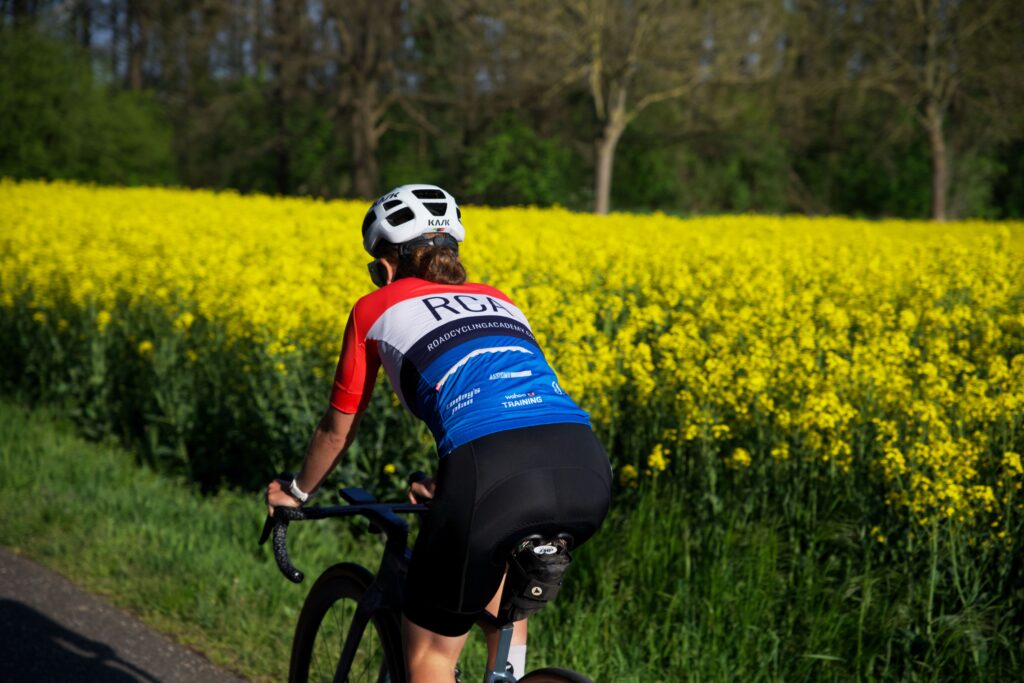
Functional threshold power (FTP) has been used for years — it’s easy to measure and simple to implement. But there are a few potential limitations often brought up in discussion. For example, FTP does not capture the full physiological picture of an athlete. FTP focuses more on aerobic capacity vs anaerobic capacity, sprinting ability, and endurance for rides of 1 hour or longer.
Critical power (CP), on the other hand, addresses these limitations and provides a more accurate physiological assessment of an athlete, including more data surrounding their anaerobic power capacity. It even provides a second measurement, known as W Prime (W’) that allows riders to better understand how much energy they have in reserve and how long they should be able to sustain a certain effort (at or above their CP).
This blog post will explain more about critical power. We’ll compare it to FTP, will highlight the benefits (and potential downsides) of using CP, and give you more advice on how to use CP best to get the most out of your cycling training.
What is critical power?
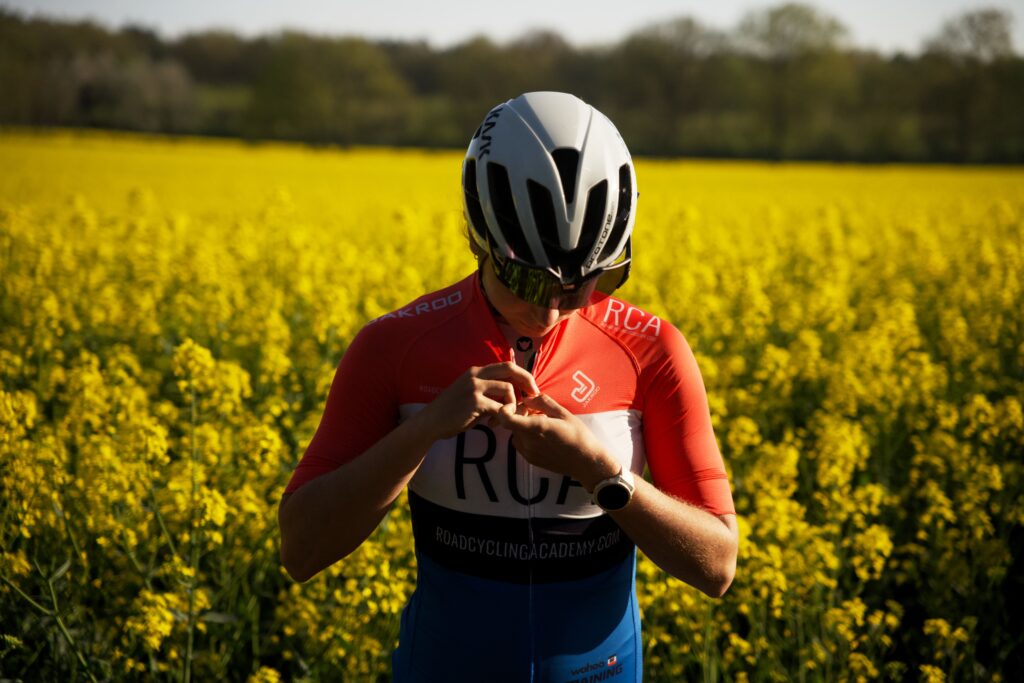
Critical Power is your highest sustainable rate of aerobic metabolism (without a continual loss of homeostasis). It equates to roughly 30-40 minutes of high-intensity cycling [2]. When you produce power over your Critical Power, it becomes ‘unsustainable’. The amount of time you can sustain that power is dependent on how far above your CP you go and how big your W’ Prime value is. Critical Power is the ‘threshold’ that separates the intensity domains from when your effort is ‘hard’ to ‘severe’. You can see this theory shown in the diagram extracted from Poole et al., 2017.
This W’ Prime value is measured in kJ and demonstrates that we have a finite amount of energy when producing power over CP. To better understand how it works, it can be helpful to visualise a battery. If you were to increase power, the battery would drain more quickly. A similar concept can be applied to critical power — when you ride above your critical power, you drain the battery much faster. Although, in this case, you’re draining your energy stores that can be used for more intense but shorter bouts of high-intensity efforts.
The battery, or W’ Prime, can be recharged, but typically, it takes a long time. You also need to go back under your CP to restore your W’ Prime. The more you drop under your CP, the quicker you’ll restore energy balance. For example, it will take longer to restore your W’ Prime by riding 10w less than your CP than 100w. Further, how well-trained you are and the size of your W’ Prime value will also impact how long it takes to restore energy balance.
Using CP and W’, we can also estimate how long you can hold a certain power over your CP. The watts you produce measure the amount of ‘work’ you are doing at that point in time. Your W’ value is a number in Joules (J) that tells you how much ‘work’ you can do over your CP in a single effort, for example.
For instance, if your CP = 300w and your W ’= 14,400 J. We can estimate that if you lock your power in at 400w, you can sustain that for 144 seconds. This is because 1 watt = 1 Joule. So you are 100w over CP, which means we use your W’- 14,400 and divide it by 100, and we get 144 seconds. This can be useful for prescribing particular sets of intervals or when you are required to maximise efforts.
What is the difference between critical power and FTP?
While the terms FTP and critical power are thrown around more than a cyclist in Belgium crosswinds, many cyclists are unsure what the difference is between the two.
FTP is typically defined as the maximum power you can maintain for 1 hour. If you were to cycle above your FTP, your body would accumulate lactic acid and would start to fatigue.
CP, on the other hand, is a power output closer to 30-40 minutes. If you can ride at your CP for 1 hour, your CP is probably not accurate.
CP also integrates other valuable physiological profiles, including respiratory, metabolic, and contractile, for greater insights into how you fatigue [1]. With greater scientific backing, CP can prove a useful tool in your training arsenal.
What are the benefits of using critical power vs FTP?
We’ve already mentioned some of the benefits, but other benefits of using critical power vs FTP include the following:
- Better understand your aerobic and anaerobic development — identify what areas need to be improved.
- The W’ Prime measurement provides much-needed data — better understand how your energy reserves work to become a more efficient rider.
- Tailor your training to target the necessary physiological systems to improve.
Are there any downsides?
There are very few downsides when it comes to CP. Similar to FTP, it also requires two tests (a 3-minute and a 12-minute maximum effort). Although, because it’s a new test, it’s often not quickly accepted by most athletes.
If you have a coach, we recommend speaking to them to weigh up your options, i.e. whether critical power is the best choice for you. New tests can be daunting, and adopting new training and testing methods can be difficult when put into practice. For example, you might find it challenging to pace a 3-minute and a 12-minute maximum effort.
And if you are switching to CP, you can use the same training zones as before (see below for an example). You just need to be mindful that your CP ‘threshold’ is different from your FTP ‘threshold’ — adjust your intervals accordingly. This is where your RPE and knowing your body as an athlete comes in really handy.
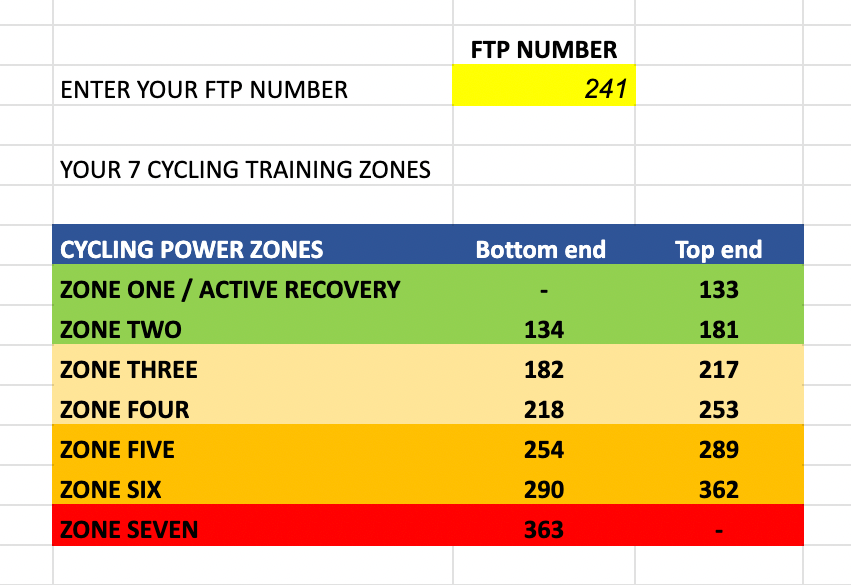
How to calculate critical power
When testing FTP, you typically perform one test that includes a 5-minute all-out effort and then a 20-minute test (in which you use 95% of the average power to get your ‘threshold’).
CP testing requires less effort, with just a 3-minute and 12-minute effort in a single session with a 20-minute recovery between efforts. You can add value and accuracy by using a third test the following day, which is typically anywhere between 4 and 6 minutes in length.
Your results from these tests are used to plot your critical power results. Each test is plotted on a graph, and where the curve levels off is your theoretical 30-40 minute threshold power, or your critical power.
Your W’ Prime is measured using the space under your power curve, and your threshold line. This determines your energy reserves which are depleted when riding above your critical power. See the diagram below for an example CP and W’ Prime graph for a cyclist.
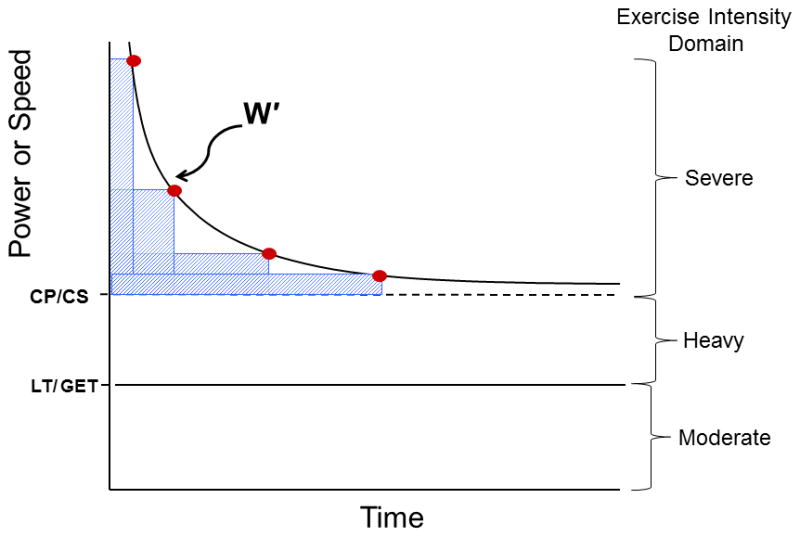
You can calculate your own test results using the critical power calculator found here.
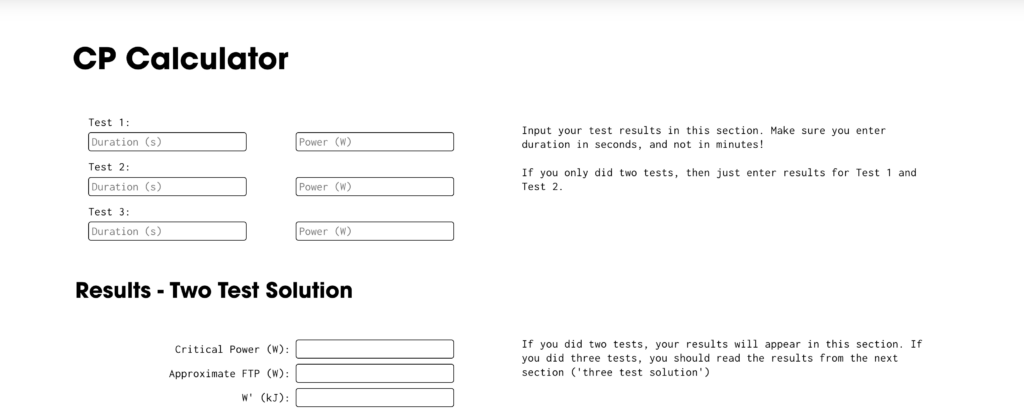
Related: Cycling Power Zones: The Ultimate Guide.
How to increase your critical power
To increase your critical power, you’ll follow similar, if not identical, training methods used to increase your FTP.
Your training should include a mix of zone 2 endurance rides, threshold efforts, and rides at a mix of intensities (in the other zones). When testing CP, if you notice that your 5-minute power is less than expected, you can add more VO2 and glycolytic efforts to increase your power over shorter durations. The extra tests included with CP are a golden opportunity to find areas of improvement.
You would do the same for other durations if needed, too.
If you want help to increase your FTP and critical power and want to become a faster cyclist, you can join the RCA Uplevel Road Cycling Course.
So which is better, FTP or critical power?
Critical Power is becoming more popular thanks to the work of top exercise scientists globally. How and why we use CP as our ‘threshold’ in training and racing is now well-known and easily applicable to the everyday cyclist. CP is definitely starting to replace FTP as the standard measure of testing and threshold. However, this does not mean that FTP is not a valid way to measure your ‘threshold’ and prescribe training, they are just different, and neither is a proven superior way to measure threshold to improve performance.
Despite this, critical Power gives us a better understanding of a rider’s overall physiology and how particular physiological parameters are changing over time which is important for coaches and athletes to monitor progress. It is also important to be able to relate this directly to an athlete’s threshold and adjust training accordingly based on 2-3 testing results, as opposed to 1 test result.
References:
- Poole, D.C., Burnley, M., Vanhatalo, A., Rossiter, H.B. and Jones, A.M., 2016. Critical power: an important fatigue threshold in exercise physiology. Medicine and science in sports and exercise, 48(11), p.2320.
- Vanhatalo, A., Jones, A.M. and Burnley, M., 2011. Application of critical power in sport. International journal of sports physiology and performance, 6(1), pp.128-136.

